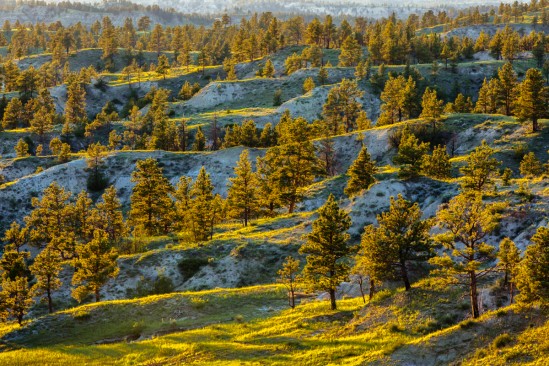Taking the spirit of the National Park Service Centennial into the next century of public lands stewardship
We’ve spent the month of August celebrating “America’s best idea,” the national parks that have given so many sportsmen and women their earliest and most formative experiences on public lands. One staffer’s close encounter with a Yellowstone black bear fueled his lifelong curiosity for wildlife biology. Another staffer credits a national recreation area outside Los Angeles with turning city rats into public lands advocates (and giving her a place to rock climb.) These are the places where we learned the value of conservation funding, found out we were strong and resilient enough to survive, and spotted some seriously big game.
For me, it was in Colorado’s crown jewel, Rocky Mountain National Park, where I was fortunate to forge many of my fondest memories. Just 45 minutes from our front door, my family and I backpacked to the upper Big Thompson River, snowshoed to Bear Lake, and cross-country skied along the headwaters of the Colorado River. The panoramic view was supposed to be the payoff of our annual pilgrimage to the top of Trail Ridge Road, but the rock candy at the gift shop was always my main motivator. Whether I was climbing in Moraine Park or fishing Fall River, it was here where I—and many kids—developed a taste and appreciation for the profound and life-changing effects of the outdoors and America’s public lands.
Because of these experiences, I enjoy a fishless day just as much as an afternoon when I can’t keep them off my line. I may have learned the basics of fishing, what trout eat, and how to read a river in my own backyard, but Rocky Mountain National Park is where I learned to forget that I was fishing and just listen to a bugling elk or watch the fog clear from the valley floor on a crisp fall morning. If I’d never set foot in the park, I can guarantee you I’d still fish, but I might not venture as far up the trail or as deep into the backcountry as I do.
We have almost 85 million acres of national parks in America and more than 300 million people visited a national park last year—an all-time high. I think about all the kids in that group who must have experienced public lands for the very first time, and my own kids who are just starting to understand and appreciate the world beyond their schoolyard and city limits. During the warmer months, my wife and I regularly take our son and daughter out to experience the wonder of the national parks and other public lands, in the hopes that someday they will see the value in advocating for them. Sure, fishing is a sport we’d love to see our son and daughter embrace, but we’re just as happy to see them splashing and laughing in a creek or astounded by how the trees are so much bigger than their dad.
The parks are an entry-level introduction to a wilder world that our increasingly urban population might not have otherwise. The ripple effect of these formative experiences could be huge for these kids, and decision-makers are starting to understand that. Last year, President Obama launched his Every Kid in a Park initiative, granting free admission to every fourth grader—and their families—to every national park in the country. Secretary of the Interior, Sally Jewell, has subsequently issued Secretarial Orders supporting this.
As our commemoration of the National Park Service Centennial winds down, we embark on another 100 years of caring for our public lands system. And as sportsmen, we have more at stake than most. Our traditions may not be tied to the national parks themselves, but the conservation legacy of leaders like Theodore Roosevelt may come alive for our kids in their first visits to these iconic landscapes. We are all, certainly, better off for having the opportunity to enjoy them.
All month long, we’ve celebrated the National Park Service Centennial with a blog series about our most significant experiences in the parks. This is the final post. Thanks for reading, and remember to keep following #PublicLandsProud on Facebook, Twitter, and Instagram.
























What wonderful memories from the mom and dad who made this a treasure one they would not forget!